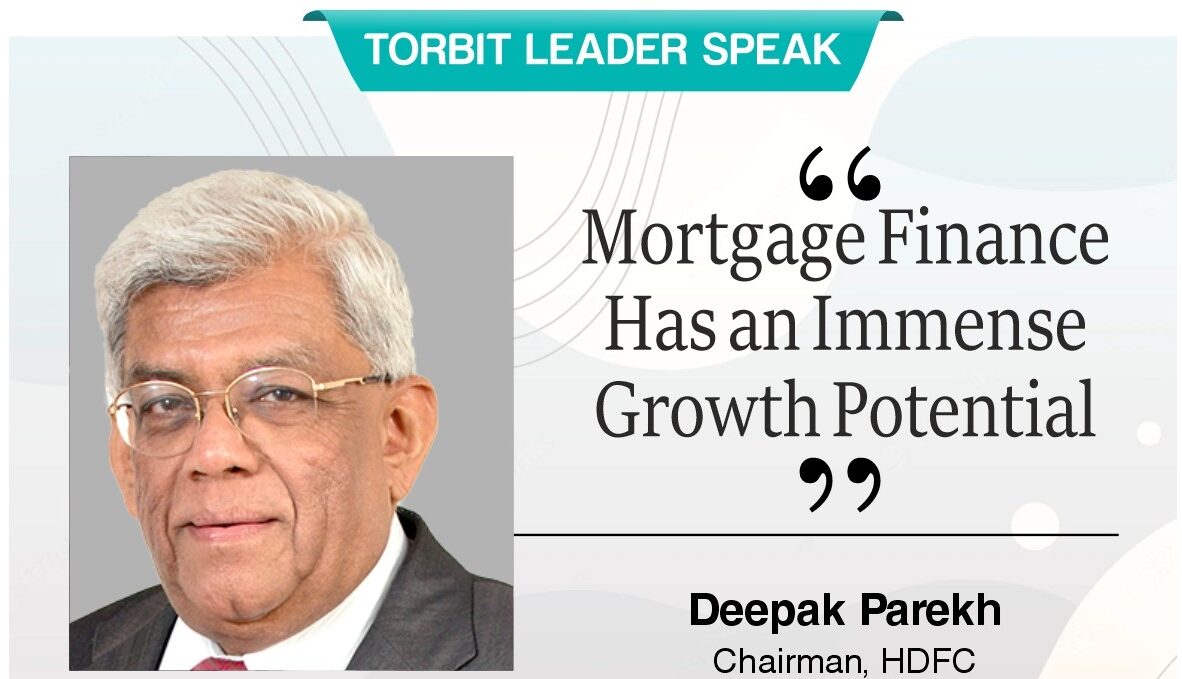

Against the uncertain global backdrop, India has increasingly been in the spotlight for being amongst the fastest growing major economies. India is not immune to global disruptions, so some slowdown in growth is inevitable. But since India is a domestic, consumption based economy, the economy is less dependent with the global economy compared to say, countries that rely heavily on exports.I have been on record many times in the recent past stating that India has never been in a stronger position than it is today. As a country, we are fortunate to see more tailwinds than headwinds. What is working well for India is the fact that we have political stability and I don’t see this being disrupted in 2024 either.
We have an uncertain global environment, but a strong domestic environment. What does this mean for the Indian real estate market? I strongly believe that the runway for mortgage finance in the country is immense. The mortgage to GDP ratio in India at 11% is still very low — even compared to our peers like China, Malaysia, Singapore and significantly lower than much of the western world where mortgage to GDP ratio is upwards of 60 to 90%. Urbanisation in India is an irreversible trend. Currently 32% of the population reside in cities and this is expected to be 40% by 2030.
Recent estimates forecast that the Indian real estate market is likely to touch US$ 1 trillion by 2030. India still has a huge housing shortage estimated at over 29 million units. The government has been supporting housing, especially through its Pradhan Manti Awas Yojana Scheme .The Credit Linked Subsidy Scheme, or the CLSS which came to an end last year,was a game changer, especially for the economically weaker sections and low income groups.
To my mind, this scheme was one of the best executed subsidy schemes. It was designed well to ensure there were no leaky buckets in the transfer of the interest subsidy and that it was given only to the intended beneficiary. As the loan was given by the housing finance company or bank, the beneficiaries were assessed carefully and the subsidy came to the qualifying beneficiary only after the disbursement was made. This ensured that sufficient checks and balances were in place. While one recognises that fiscal support cannot be without hard timelines, given the shortage of housing in the country, I am a strong advocate that the CLSS component at least for the lower income groups should have continued for a few more years. Even the concessional stamp duty rates that were offered by a few states during the pandemic had given a strong boost to the housing sector. This shows that a few concessions go a long way in helping improve home affordability.
Perhaps the withdrawal of the CLSS and concessional stamp duties in certain states coinciding with the uncertainty on the interest rate trajectory had some dampening impact on housing, especially for the low income segments. I also believe the definitions of economically weaker sections and low income groups or even the loan and property amounts used to qualify for priority sector housing loans need to be periodically revised to reflect changing market realities.
I still maintain that affordability has not been eroded as far as housing is concerned. There are a lot of screaming headlines stating how the interest rate hikes has led to sharp increases in EMIs or very stretched tenors. Here it is important to recognise that it is the primary responsibility of a lender to ensure that a customer is not over extended while taking a home loan.
The more important driving point is that a home loan is generally for a long tenor and over this period, there will be both, upward and downward interest rate cycles. India is lucky that its mortgages are not underwater like parts of the western world where the mortgage loan in itself is higher than the value of the property.
Market cycles will come and go and one has to look at the long-term. 66% of India’s population is below the age of 35 years. This is the cohort that are future home buyers. In equal measure, with the government’s focus on making India a global manufacturing hub and with the development of industrial corridors, the opportunities for real estate development have increased manifold. There is growing demand for new real estate assets such as warehousing, fulfilment centres, data centres, hospitality, lab offices, amongst others expanding into the tier II and tier III cities and beyond.
As a country if we look to increase homeownership or deepen retail credit markets in a responsible manner, it is important we keep the experiences of several other countries in mind and ensure our households do not get excessively overleveraged. The share of household savings needs to increase from current levels because this is what will drive future consumption and investments. When individuals are encouraged to save early in life, it becomes significantly easier to put in their share of equity contribution for a house. The average age of a home loan borrower in India is still quite high at around 35 to 39 years. Adequate savings is also the buffer when times are adverse.
And finally some advice to developers from tier II and tier III cities. The Indian real estate market needs a lot more of affordable and mid-income housing stock. In the recent period, there has been a larger proportion of the incremental stock of housing towards the upper and luxury segments. Time and again, many developers tend to build without correctly assessing where the real demand is. The demand for affordable housing is immense. Affordable housing projects at the right location and right price points may have lower margins, but the velocity of sales and cashflows are much faster.
1
2
3
4
5
6